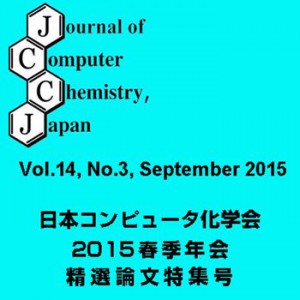<Title:> 粗視化分子動力学法におけるダブルネットワークゲルのモデリング手法の開発と破壊プロセスへの応用
<Author(s):> 斎藤 圭祐, 樋口 祐次, 尾澤 伸樹, 久保 百司
<Corresponding author E-Mill:> momoji(at)imr.tohoku.ac.jp
<Abstract:> We examine the mechanism of fracture processes in a double-network (DN) gel model by using a coarse-grained molecular dynamics simulation. Initially, we develop a modeling method for DN gel containing both slightly and highly cross-linked networks, and then stretch the DN gel model. During stretching, the highly cross-linked network begins to dissociate at a strain of 1.0, increasing the stress. At strains from 4.0 to 5.0, the slightly and highly cross-linked networks simultaneously dissociate and the stress decreases. Then, the dissociation of the highly cross-linked network stops and only the slightly cross-linked network dissociates at a strain of 12.0, while the stress remains almost the same. We reveal that characteristics of each type of network gradually appear in the DN gel. Next, we change the polymer chain length to reveal its influence on the mechanical properties of the gel. An increase in the length of the slightly cross-linked network chains improves the strength of the DN gel, whereas that of the highly cross-linked network chains does not affect its strength. An increase in the slightly cross-linked network chain length increases the number of entanglements, leading to the increase in strength.
<Keywords:> Polymer, Double-network gel, Fracture process, Mechanical strength, Coarse-grained molecular dynamics
<URL:> https://www.jstage.jst.go.jp/article/jccj/14/3/14_2015-0053/_article/-char/ja/
